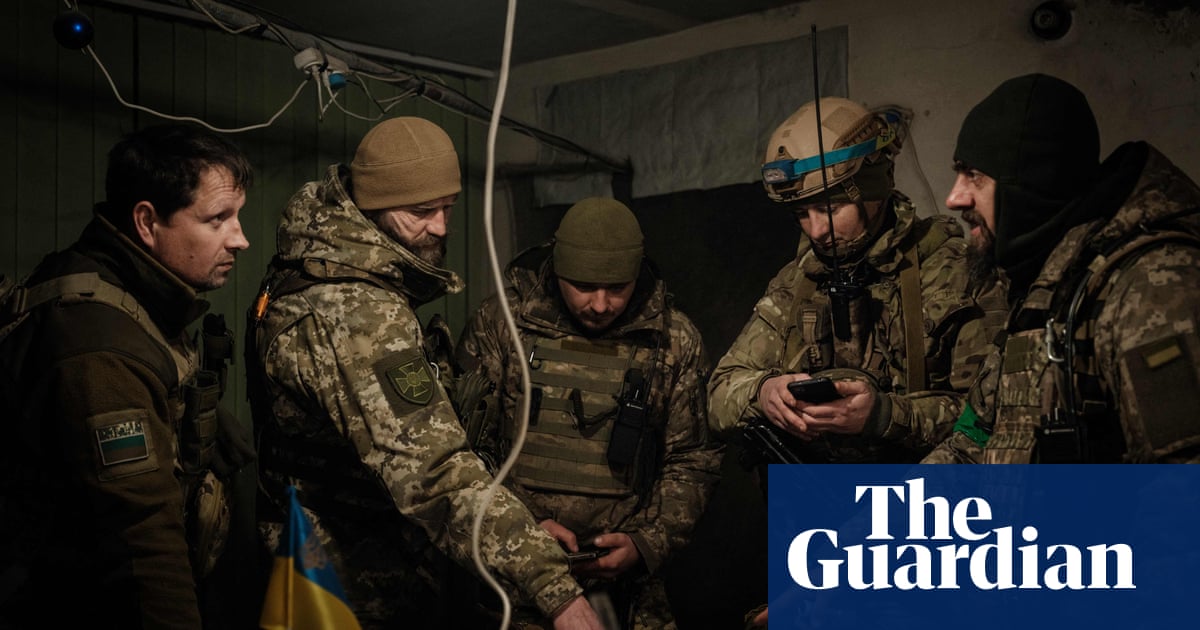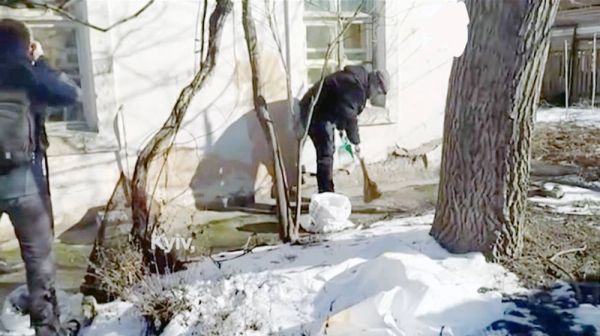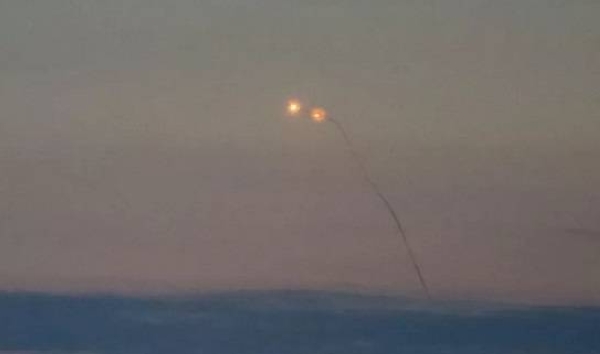
Russia has launched a drone and missile attack on targets in the south and east of Ukraine, according to officials and local residents who reported hearing loud explosions.
Air raid sirens sounded in much of the country late on Thursday night. Serhiy Lysak, the military administrator in the Dnipropetrovsk region, said Shahed drones were detected on their way to the area.
The Dnipro Info Telegram channel reported the distinctive “moped-like” sound of Iranian drones hovering in the sky. “Get to shelters and stay there,” it posted. At least one drone was shot down, it said.
Vitalii Kim, the governor of Mykolaiv oblast, said drones were spotted heading towards the regional capital, which has been repeatedly shelled since Russia’s full-scale invasion almost a year ago. “Not that many of them,” he wrote on his Telegram channel.
There were further reports of drones in Zaporizhzhia oblast where fighting is taking place across a sprawling frontline between Russian and Ukrainian forces. Ukrainian air defences were said to be working.
In the eastern Donbas, locals in the Ukrainian-controlled cities of Kramatorsk and Sloviansk said they could hear explosions. Both urban centres are close to Bakhmut, where fighting has raged for months. Russian troops have been seeking to encircle the city as a prelude to an attack on Kramatorsk, a key Ukrainian military hub.
There were further unconfirmed reports of 30-40 Shahed drones launched from occupied Mariupol and heading toward Ukrainian-controlled territory. The attack came hours after President Volodymyr Zelenskiy’s trips to London, Paris and Brussels and his address on Thursday to the European parliament, and meeting with EU leaders.
The overnight barrage came hours after the governor for the Luhansk region said that Russia had launched a major offensive in eastern Ukraine and is trying to break through defences near the town of Kreminna.
Serhiy Haidai told Ukrainian TV that Russian troops had gone on the attack and were trying to advance westwards across a winter landscape of snow and forests. There had been “maximum escalation” and a big increase in shooting and shelling, he said.
“These attacks are practically a daily occurrence. We see small groups [of Russian soldiers] trying to advance, sometimes with the support of heavy armour – infantry fighting vehicles and tanks – and sometimes not. There is continuous firing.”
He claimed the offensive had not worked. “So far they haven’t had any success. Our defenders have been able to hold them back completely,” he said.
Western governments believe Russia is planning a major assault on Ukraine, possibly as early as next week before the 24 February anniversary of the launch of its full-scale invasion. Its main goal is believed to be to capture the Donbas region, including Luhansk, which Ukraine partly controls.
The timing of any attack in unknown. Ukrainian government sources say one scenario would include ballistic missile strikes on large cities including Kyiv, and an attempt to cut off the east of the country by bombing bridges and advancing in a sweeping arc from the north and south.
Military analysts are sceptical that Russia has enough infantry units to advance rapidly into Ukrainian territory. They acknowledge, however, that some sections of the Ukrainian-Russian border are lightly defended, with the bulk of Ukrainian forces located in the eastern Donetsk province where fighting rages around the city of Bakhmut.
There are growing signs that even with Russia’s wider battle strategy unknown, a substantial offensive in the east has already started.
Russian forces, which dug in and brought in reinforcements after Ukrainian troops retook almost all of Kharkiv province and pushed into Luhansk last autumn, are now moving forward along a broad front west of the towns of Svatove and Kreminna.
Punching through Ukrainian lines there would take Russian forces a step closer to the much larger city of Kramatorsk, a key Ukrainian military hub. Haidai said Ukraine needed “heavy equipment and artillery ammunition, then we will not only be able to maintain the defence but also make a good counter-offensive operation”.
Svatove and Kreminna, which lies about 60 miles (100km) north-west of the regional capital, Luhansk, were both occupied by Moscow last spring. Before the Ukrainian counter-offensive last year, Russia had control of Luhansk oblast, partly captured in 2014, bar a handful of villages.
Artur, a Ukrainian soldier fighting in Kreminna, said: “The fighting has intensified. They launched another offensive last night. So far we are holding our position, but it is tough. They attack in small groups, usually groups of 15 men. We have many injured but they have many more casualties.”
The Institute for the Study of War (ISW) confirmed a “marked increase” in operations in the area over the past week in its latest report. It said Russia had made marginal gains along the border between Kharkiv and Luhansk provinces, including in the village of Dvorichne. The offensive had probably not yet “reached its full tempo”, it said.
“The commitment of significant elements of at least three major Russian divisions to offensive operations in this sector indicates the Russian offensive has begun, even if Ukrainian forces are so far preventing Russian forces from securing significant gains,” the ISW report said.












